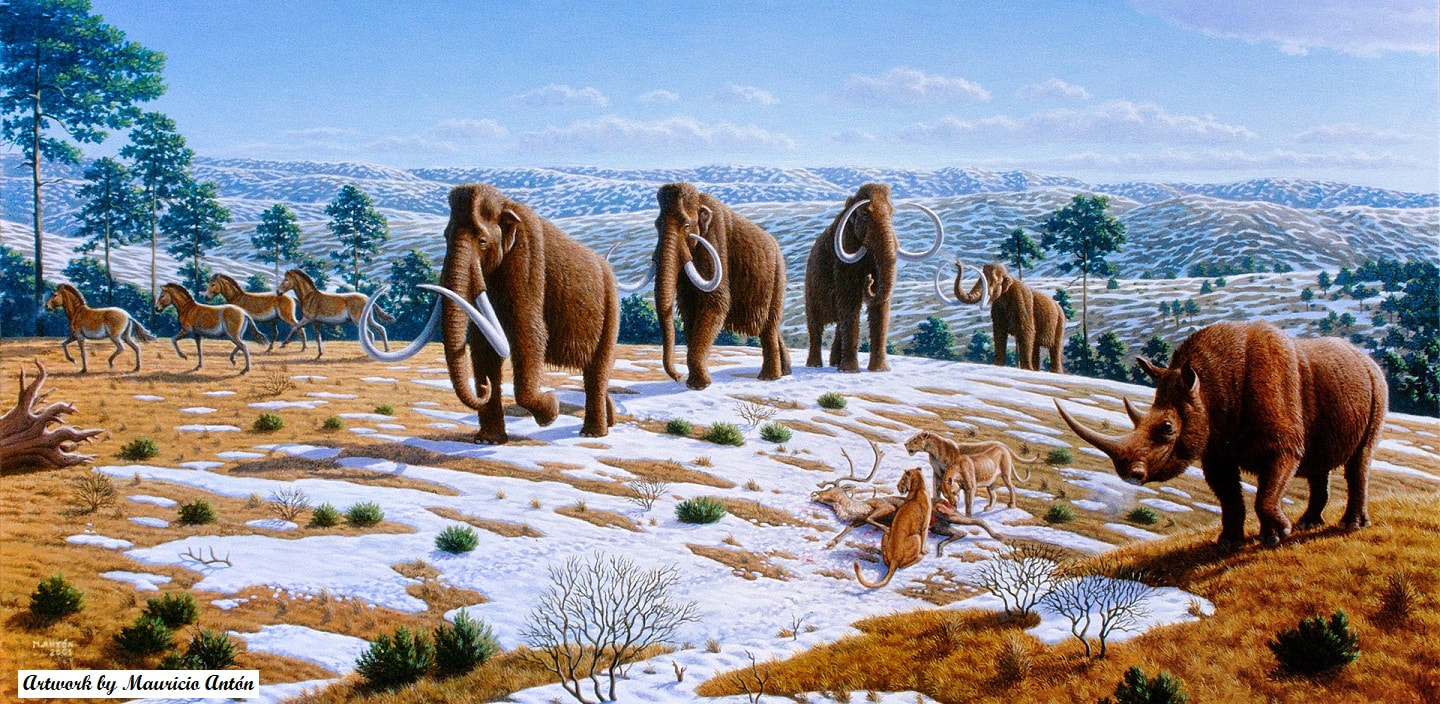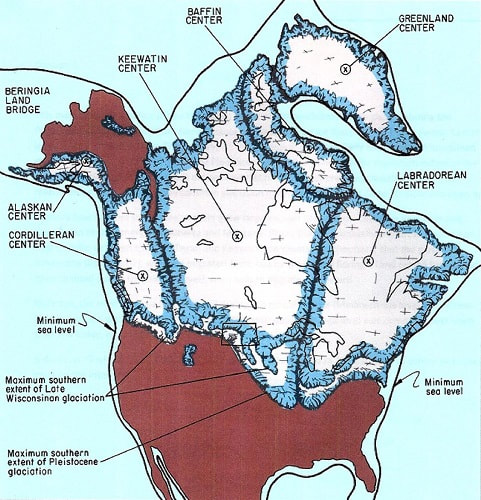20E: A Timeline
Late Pleistocene Significant Events
By Thomas Thurman
Source:
A Warm Thermal Enclave in the Late Pleistocene of the South-eastern United States; Dale A. Russell, Frederick J. Rich, Vincent Schneider and Jen Lynch-Stieglitz; Biological Review, 2009, Cambridge Philosophical Society
2,700,000
Onset of significant Northern Hemisphere glaciation
1,350,000
Mammoths (Mammuthus) appear in North America; about 40 glacial cycles ago
210,000 to 160,000
First appearance of the genus Bison south of 55 degrees North in North America; about 2 glacial cycles ago. (Added by author: At about 200,000 years ago our species emerged.
130,000
Illinoian glacial interval ends, Sangamonian interglacial interval begins. (Glacial retreat)
118,000
Wisconsinan glacial interval begins (Glacial advance)
23,000 to 19,000
Last Glacial Maximum
19,000
Abrupt 10 meter rise in sea levels due to glacial melting. Humans possibly present in Southeastern United States
14,500
Bølling-Allerød warming begins abruptly, onset of rapid glacial retreat, (sea levels quickly rose by more than 100 meters or 328 feet); oldest credible evidence of humans in Florida; establishment of semi-permanent human settlements in the Near East.
13,400
Clovis hunters present in mid-latitude North America
12,800
Younger Dryas cooling event abruptly begins.
12,750
Extinction of megafauna essentially complete in mid-latitude North America.
12,000
Beringian isthmus flooded. (This is the Bering Sea land bridge between Alaska and Asia; now flooded it prevents further pedestrian access to North America from Asia)
11,570
Younger Dryas cooling abruptly ends. Wisconsinan glacial interval ends, end of “Ice Age”
Abrupt 10 meter rise in sea levels due to glacial melting. Humans possibly present in Southeastern United States
14,500
Bølling-Allerød warming begins abruptly, onset of rapid glacial retreat, (sea levels quickly rose by more than 100 meters or 328 feet); oldest credible evidence of humans in Florida; establishment of semi-permanent human settlements in the Near East.
13,400
Clovis hunters present in mid-latitude North America
12,800
Younger Dryas cooling event abruptly begins.
12,750
Extinction of megafauna essentially complete in mid-latitude North America.
12,000
Beringian isthmus flooded. (This is the Bering Sea land bridge between Alaska and Asia; now flooded it prevents further pedestrian access to North America from Asia)
11,570
Younger Dryas cooling abruptly ends. Wisconsinan glacial interval ends, end of “Ice Age”

